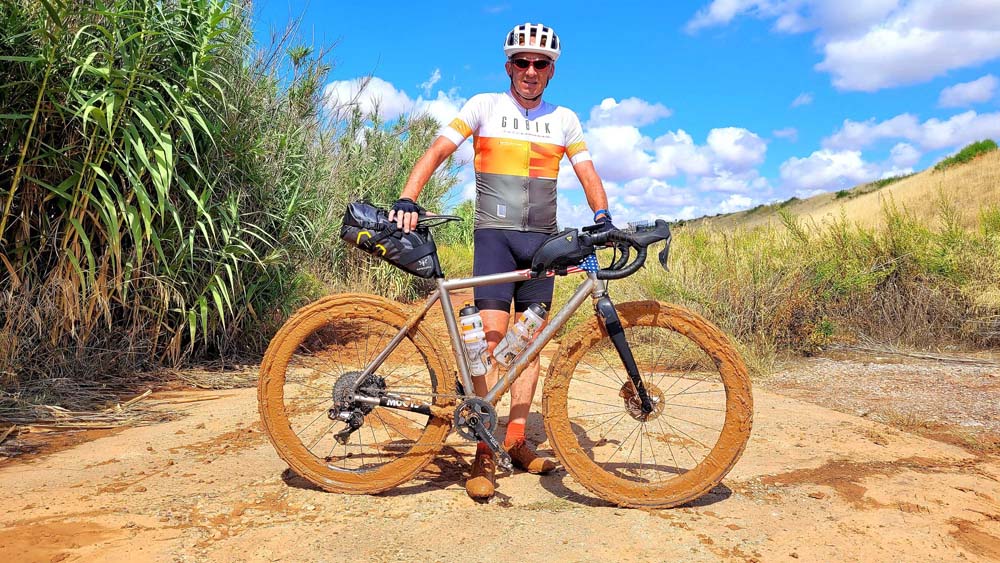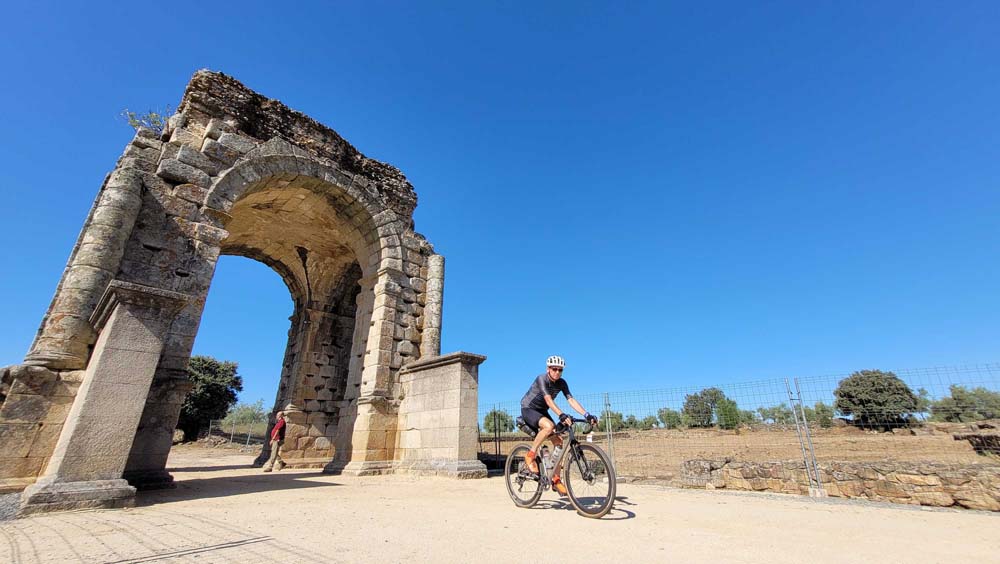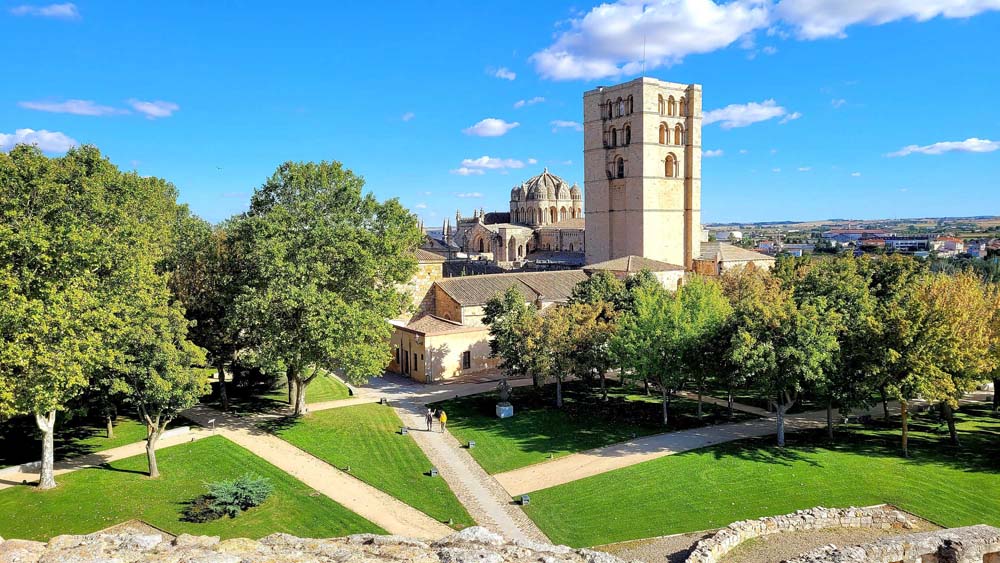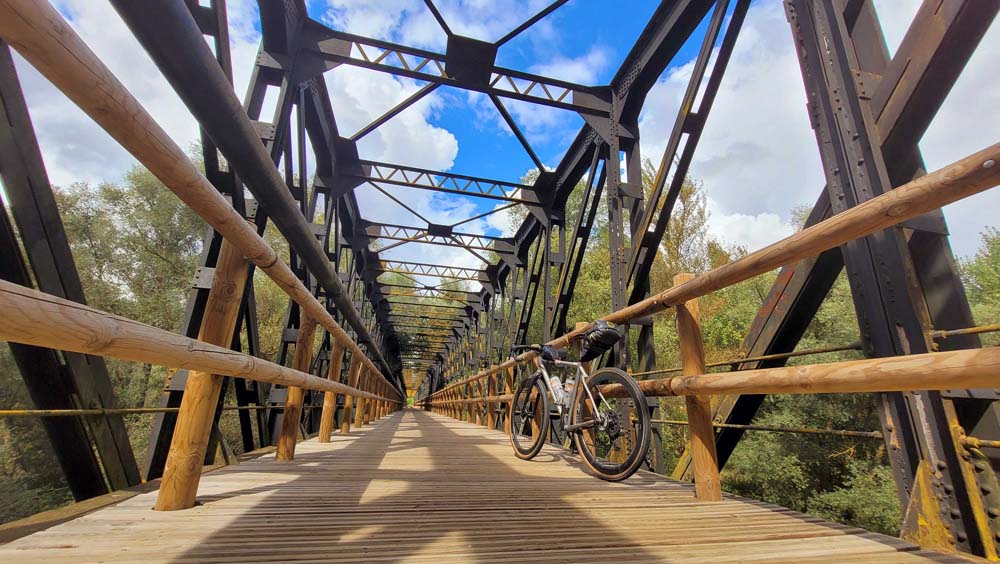After a long season of riding, racing and organising gravel events, Timo Rokitta headed to Spain for one last adventure before he wound down into winter mode.
The "Ruta de la Plata", also known as the Silver Route, is an old trade route of almost 1,000 kilometers from the times of the Romans. The route follows the old military roads of the Romans from Seville in Andalusia to Gijon on the Atlantic coast in Asturias. The route can be ridden mainly off-road, away from the tourist crowds and is therefore an insider tip for adventurous gravel bikers today. We started our adventure at the remarkable Plaza Espana in Seville, the secret capital of Andalusia.
Light fog accompanied us for the first few kilometers. The first climbs began after 30 kilometers and then the route led us constantly up and down hills. In El Real de Jacha we turned left in front of the Castillo onto the first dream climb that brought us to the plateau near Monesterio.
Behind Monesterio the landscape changed and the route now led us through cork oak forests, on whose pastures black Iberian pigs cavorted. We reached Zafra - a small town with a great history. The place had once become rich through long-distance trade. This can still be seen all over town today. The central square - the Plaza Mayor - had been beautifully restored and bears witness to bygone times. Once the alleys leading away from it were regularly closed with wooden beams so that it could be converted into a temporary bullring.

Before we got to Merida, we literally sunk into the mud of the Extremadura over which we were attempting to traverse. We had to thoroughly clean the wheels several times. Luckily, a wide and arrow-straight trail, which we rode at full gas, soon compensated for the battle with the mud. In no other Spanish city are the traces of Roman times as vivid as they were in Merida. The archaeological sites are a UNESCO World Heritage Site. There are many important examples of Roman culture in the city. The former capital of the Roman province of Lusitania was at times one of the most important cities in the entire Roman Empire.
Sandy trails that demanded a lot of “skiing” technique accompanied us once we left Merida. When the ground changed to gravel again, we were almost in Alescusar. We then crossed a 2,000 year old Roman bridge and headed towards Caceres. But before that it, our route took us over a long-abandoned airfield, where the dreaded Condor Legion landed over 80 years ago.
Caceres was a city well worth seeing. As usual in Spain, the center was the Plaza Mayor with the old town hall. The lively square was surrounded by restaurants and bars. The historical landmark of the Torre de Bujaco was built in the 12th century by the Moorish Almohads on the site of a pre-existing Roman fortress. From here our route led through the Puerta de la Estrella to the medieval old town. The route led us past impressive palaces, churches and picturesque little squares.

After Casar de Caceres, we rolled along wide, white, corrugated trails. These later led through extensive pastures with old stone walls. A bumpy single track brought us down to a steel-blue reservoir. Before we could take a well-deserved break in Canaveral, a very special challenge awaited us. The track led across a pasture and through the middle of a herd of black bulls. We rolled through it very carefully, as if on eggshells, and afterwards we were incredibly relieved not to have been chased by the black monsters.

We reached Plasencia via the Puente de Trujillo, which crossed the Río Jerte. The history of this medieval city began in 1186 with the founding of the city by Alfonso VIII. We left the area around Plasencia via the old bumpy Roman road. We opened and closed countless cattle gates before taking a sandy single trail, which ended on a plateau. An old monumental Roman gate heralded the ascent to the Puerto de Bejar. Via the very steep and coarse-paved Roman road, we reach almost 1,000 meters above sea level.
After a stopover in Bejar, the next morning was unusually cold. The thermometer only showed 11 degrees. Battling a strong headwind we rode over deserted gravel trails. On the way we noticed the old stone pillars from Roman times. We stayed on the plateau and didn't meet a single soul all day. Only shortly before Salamanca did it get a little livelier again.
Salamanca is one of the oldest cities in the Castile and León region. "El que quiera saber que vaya a Salamanca": If you want to gain knowledge, go to Salamanca, it is said in Spain. That was true in the past, and it is still true today. Salamanca has one of the oldest and most important university cities in Europe. Here we explored the pretty old university town on foot.
We had a heavy headwind and tough gravel crunched under our tyres as we headed on towards the northeast. The gravel surface was rippled like a washboard in places, but luckily this was later replaced by a sandy surface again. The route ran in parts along an old railway line, which was decorated with faded signs from bygone times and was particularly lonely. As it flattened out, we felt like we were in the Great Plains of the USA. Wheat fields and olive trees - brown dry land, here it hardly rains.

The nearest medieval town was Zamora. This sparsely populated region was historically a site of repeated battles between Christian and Islamic troops. After being destroyed by the Moors in 981, the city was only rebuilt and repopulated during the 11th century under the rule of the King of León Fernando I. Behind Zamora the landscape changed its image again. Our route took us on smooth, fast trails through fields. There were now many pilgrims on the track who were hiking to Santiago de Compostela. Of course, we had a headwind all through this section – isn’t that always the way! Before our route arrived at Benavente, the Ruta de la Plata ran on a "Via Verde", an old railway converted into bike path. We found appropriate accommodation in the former castle, which had been converted into a hotel. At night the doors rattled and the next morning the bathroom door in the room opened as if by magic – the resident Poltergeist sent his regards.

Another railway bike path took us out of town in the direction of Leon. We rode parallel to a national road on a gravel trail to Leon. The track was identical to the pilgrimage route that comes from Pamplona. That's why there was really something going on here with pilgrims who came towards us armed with a scallop shell.
With 130,000 inhabitants, Leon is the capital of the province of the same name in the autonomous community of Castile-Leon. The city was packed with pilgrims from all over the world. The outstanding sights in Leon included the Gothic cathedral, the royal basilica of San Isidoro, and the former pilgrims' hostel of San Marcos.
The next morning, we set off and crossed the Asturian mountains. It was drizzling and the mountains were covered in mist. A 5-degree cold wind blew on the 1,378 meter high pass "Puerto de Pajares". A quick descent took us down to Pola de Lena, where a double cafe con leche brought us back to life. Then followed - what else would you expect - another 5 km long ascent, which the professionals at the Vuelta had already ridden over the next mountain several times. Normally the route of the Vuelta then leads to the notorious Angliru - but our track led us directly to Oviedo.
The former city of Ovetum has been closely associated with the Asturian monarchy since it was founded in the 8th century and was even made the capital of the kingdom. In the vicinity of the cathedral, we saw some of the most important buildings in Oviedo - the Church of San Tirso, the Museum of Fine Arts and the Museum of Archaeology.
The last stage, our so-called “Tour d'honneur”, took us over small, remote roads to the Cantabrian Sea. When we got lost in our thoughts for a moment, we are suddenly right in front of the Fernando Alonso Motor Sports Museum. The area was very industrial. Along the route we saw many "Hórreos" - square wooden structures on smooth stone pillars with a tiled roof to help keep food dry.
The last ascent was tough again, with a narrow road which climbed incredibly steeply up the mountain. The subsequent descent to Gijon was then only a matter of form. After almost 1,000 kilometers through four Spanish regions and after 10 days of riding we were at the destination of our dreams.
The remoteness of Extremadura, the historical legacies of the Romans and the cities worth seeing were burnt into our memories - just like our tyres on the Spanish gravel trails.
Timo rokitta
Timo Rokitta lives to ride his gravel bikes. He can be found organsing gravel events in his home town of Worms, Germany, but also rides an incredible amount. He's toured all over Europe on his gravel bike and is a regular contributor to Gravel Union.